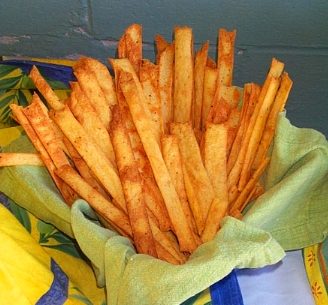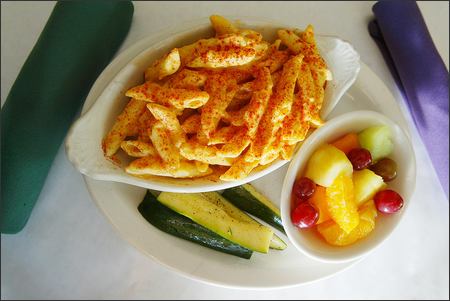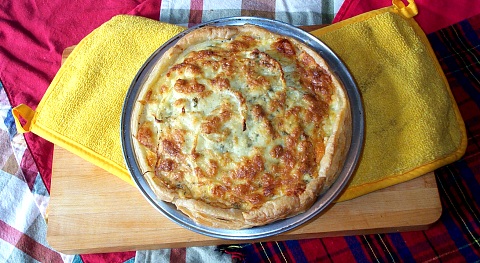Cheese Crunchies
 When we were kids, my best friend Bob Meyer and I created a snack by frying Rice Chex with our parents’ best cheddar. We called the snack “Cheese Crunchies”. Bob’s mom said we couldn’t make it at their house anymore. The smell drove her crazy and it made horrible mess out of her sauté pan. Also, she was probably annoyed that we used so much of her good cheddar. My parents were pretty used to me making messes in the kitchen by this time so we made it at my house after that.
When we were kids, my best friend Bob Meyer and I created a snack by frying Rice Chex with our parents’ best cheddar. We called the snack “Cheese Crunchies”. Bob’s mom said we couldn’t make it at their house anymore. The smell drove her crazy and it made horrible mess out of her sauté pan. Also, she was probably annoyed that we used so much of her good cheddar. My parents were pretty used to me making messes in the kitchen by this time so we made it at my house after that.
I still love crunchy cheesy things and I’m pretty sure I’m not alone. Both of these recipes came from Feeding Frenzy.
The first one, Cheddar Straws, is a variation of a snack I first had in Davenport, Iowa. My ex-wife’s grandmother Kate used to make these things. This isn’t her recipe. It’s an adaptation of an adaptation of one I found in the back of a Gourmet magazine in the 80s.
Kate never used a food processor. I never watched her make these, but she’d have cut the butter and cheese into the flour with a pair of knives – or perhaps a pastry blender.
Feeding Frenzy customers often said, as they stuffed these into their mouths by the handful, that they were like the best Cheez-its ever. I’m pretty sure that this was intended to be a compliment.
These things are a lot of work. They’re worth the effort.
2 cups unbleached all-purpose flour
1 teaspoon salt
1 pound of the best, sharpest cheddar cheese you can find, grated
4 ounces unsalted butter, cut in 1/4" pieces cubes, COLD
dash chipotle powder or piccante Spanish paprika
5 tablespoons ice water
In a food processor, process the first 5 ingredients together with the metal blade until the mixture has the consistency of bread crumbs.
With the food processor running, add the ice water and process just until it forms a dough that holds together. Add more water only if necessary. In fact, if you don’t need to add the full 5 tablespoons of water to get the dough to hold together, don’t.
Turn dough out onto a board. Working quickly, tear off a chunk of dough about the size of your fist. Flatten it and set it between two good-sized sheets of wax paper. Through the wax paper, roll the dough out fairly thin – as thin as you can without the dough tearing or becoming translucent. Leave the rolled-out dough in the wax paper. Repeat the process until you’ve done this with all the dough.
When you’re done with the rolling-out, wrap the dough (wax paper and all) in plastic cling wrap and refrigerate it overnight, if possible – but at least for 2 hours.
After the dough has thoroughly chilled and rested, get it out of the refrigerator and remove the cling film.
Again, you have to work quickly here. Set one piece of rolled-out dough on a cutting board, remove the top sheet of wax paper and using a pizza cutter or a pastry cutter (or a sharp knife if that’s all you have), cut the dough into 1” strips.
Transfer the dough strips from the bottom sheet of wax paper to a COLD, greased cookie sheet. You can put them fairly close together on the cookie sheet because there won’t be much spreading as the cheddar straws bake. Repeat this until you’ve used all your sheets of dough (or until you’ve run out of cold cookie sheets). Return the filled cookie sheets to the refrigerator until you’re done with this process.
If you don’t have enough cookie sheets to transfer all the dough strips at once, you’re going to have to bake them as you go. In that case, cut only as much dough as you are ready to bake at a time and return the remainder to the refrigerator. You’ll have to wait to cut and transfer more dough strips until your cookie sheets have had a chance to cool completely – COMPLETELY. Cool them in the refrigerator, if possible.
It’s important to keep the dough and the cookie sheets cold until they go into the oven. If they aren’t kept cold, the cheddar straws won’t be crisp and that will be hideously disappointing.
Bake the strips, one or at most two pans at a time for 10 minutes in a 400 degree oven or until golden brown. If you bake two pans at once, switch them halfway through baking to ensure even browning.
When the cheddar straws are done, remove them from the oven and transfer them (carefully – a fine metal offset spatula is good for this) to a rack to cool completely. It’s important that they cool completely before you store them, otherwise they will lose all that precious crispness you worked so hard to achieve. Store these in an airtight container. I suggest you make these no more than a day in advance – if possible, bake them the day you intend to use them.
As I’ve written elsewhere here, when I first came up with the idea for Gorgonzola Shortbread, I thought an original idea. Then about 10 minutes later, I Googled the name and found a page of entries discounting my claim of originality. Whatever.
We used to serve these with a sun-dried tomato relish. Fabulous. The yield is roughly 72 shortbreads if you use a 1.5” cutter.
1 pound gorgonzola cheese, crumbled (use Gorgonzola Piccante or domestic Gorgonzola for this. Gorgonzola Dolce is too creamy)
4 ounces cold unsalted butter, cut into 1" cubes
1/2 teaspoon salt
pinch chipotle powder
3 cups all-purpose flour
Combine the above in the bowl of a food processor. Pulse until roughly the consistency of bread crumbs. Alternately you can cut the ingredients together with two knives or a pastry blender. Either way, the end product should have that bread crumb consistency.
Add just enough ice water (without the ice) by tablespoons until the dough can be gathered together. The more water you add the longer you’ll have to bake them.
At this point, the dough will be a depressing greenish grey. Don’t be discouraged. This is still a good idea.
Pat the dough out to a 1/4” thickness and cut with a round 1.5” cookie cutter. Transfer shortbreads to an ungreased cookie sheet.
Bake at 225 degrees for an hour and a half (or even longer - until they're fairly dry). You bake them at this temperature to dry them out without browning them too quickly. This achieves the lovely shortbread texture that we’re looking for.
When the shortbreads are nice and dry and just a little brown, transfer them to a rack to cool completely before storing in an airtight container. Again, it’s a good idea to wait to bake these off until you’re ready to use them, but you may bake them the day before without losing too much of that lovely dry, shortbread-y texture.



